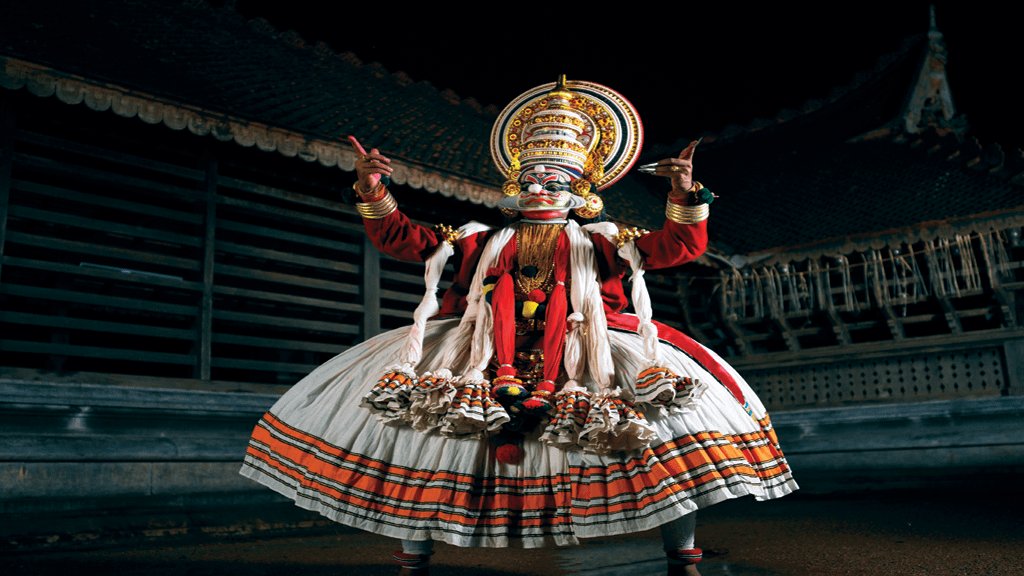-
Dance Forms of Kerala

Kerala has been acknowledged for its rich culture and tradition. The art and dance forms of the state holds a special place for making it a tourist hub. God’s own country has different dance forms. The native dance forms were derived from the earlier folk dances. Each dance is unique in the way of presentation. Here we are detailing the different dance forms of Kerala.
Kathakali
It is one of the famous classical dance forms mainly performed in Kerala. It is a perfect combination of music, dance and drama. Kathakali means story play. The dance form is generally performed by men. The costumes of Kathakali includes headgear, special ornaments, swirled skirts etc. This dance form use hand and facial expressions to explain the story. The act depicts the epics stories of Hindu Puranas like Mahabharata, Ramayana etc. The vocals of Kathakali is in Sanskritized Malayalam form. The act symbolises the fight between good and evil.
This dance form is known for its uniqueness. We can distinguish the characters by the makeup itself as it differs according to the shades of the character. The category includes Paccha, Kathi, Kari, Thaadi, Minukku etc. Paccha (green)is used for characters like Krishna, Rama, Vishnu, Shiva, Nala, Arjun, Yudhishthira etc. As these characters are considered as noble they are given the same makeup i.e their lips will be painted in coral red along with green face makeup. Some evil characters also have green makeup to represent their excellence but will have red colour in any form(like dotted line or dots) to denote the evil nature. Thaadi is used for characters with an evil streak like Ravana. Usually performed in the temple premises Kathakali is one of the major tourist attractions of Kerala. So if you are planning to visit Kerala don’t miss the opportunity to experience this unique art form.
Mohiniyattom
One of the native dance form of Kerala. Mohiniyattom means Mohini’s dance, it is solo women dance. Mohini is considered as Lord Vishnu’s avatar. This dance form is considered as a mix of Kathakali and Bharatnatyam. The art form is described in the Natya Shastra. Mohiniyattom includes Carnatic way of singing and acting through the play. The song is in Manipravalam, a Malayalam-Sanskrit hybrid. It is said that Mohiniyattom originated in the 6th century. The costume of Mohiniyattom is plain white or off white sari embroidered with the gold layer, it looks very similar to Kasavu saree. The dancer uses limited jewellery without any head mask. It is one of the eight dance forms included in the Sangeet Natak Akademi.
Thirvathirakali
Thirvathirakali is one of the popular group dance forms performed during the festive season. It is usually performed on Thiruvathira day in the Malayalam month Dhanu(December-January), the birthday of Lord Shiva. This dance is performed by women to attain marital bliss. The sinuous movement is done by a group of 8 or 10 members with “nilavilakku” in the centre. The costume includes Kerala traditional kasavu saree with simple ornaments along with fresh jasmine in the head makeup.
Ottamthullal
The dance form introduced by Kunchan Nambiar in the 18th century. Ottamthullal is performed by a solo dancer with green makeup and decorated colourful costumes. The performer narrates a story based on mythology. Kunchan Nambiar has crafted the art in such a way it consists of comedy element in it. It is developed in the Malayalam language. Simple language usage and comedy elements made Ottamthullal very popular among the local audience. It is considered as one of the most popular dance forms.







